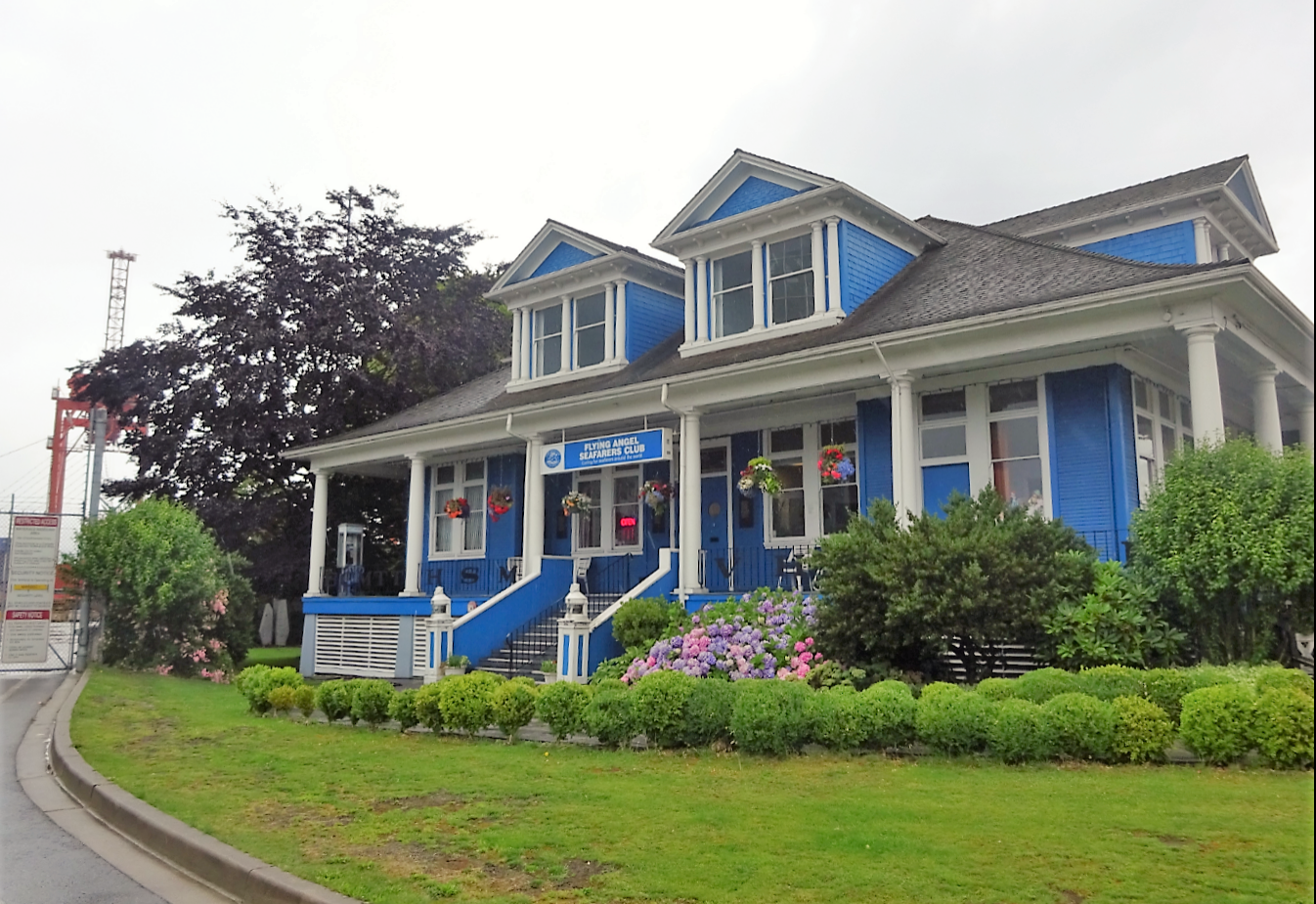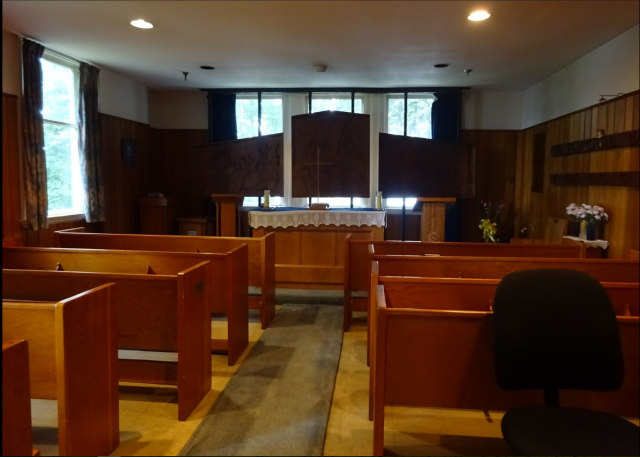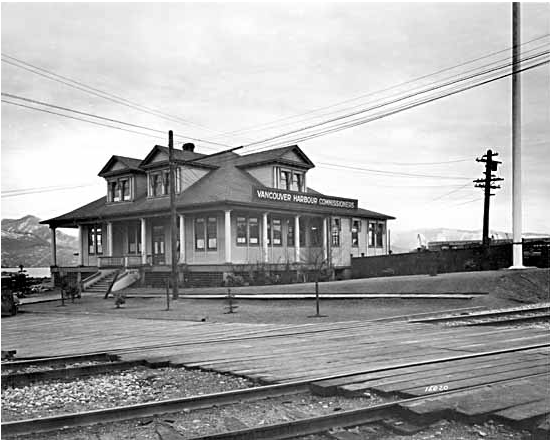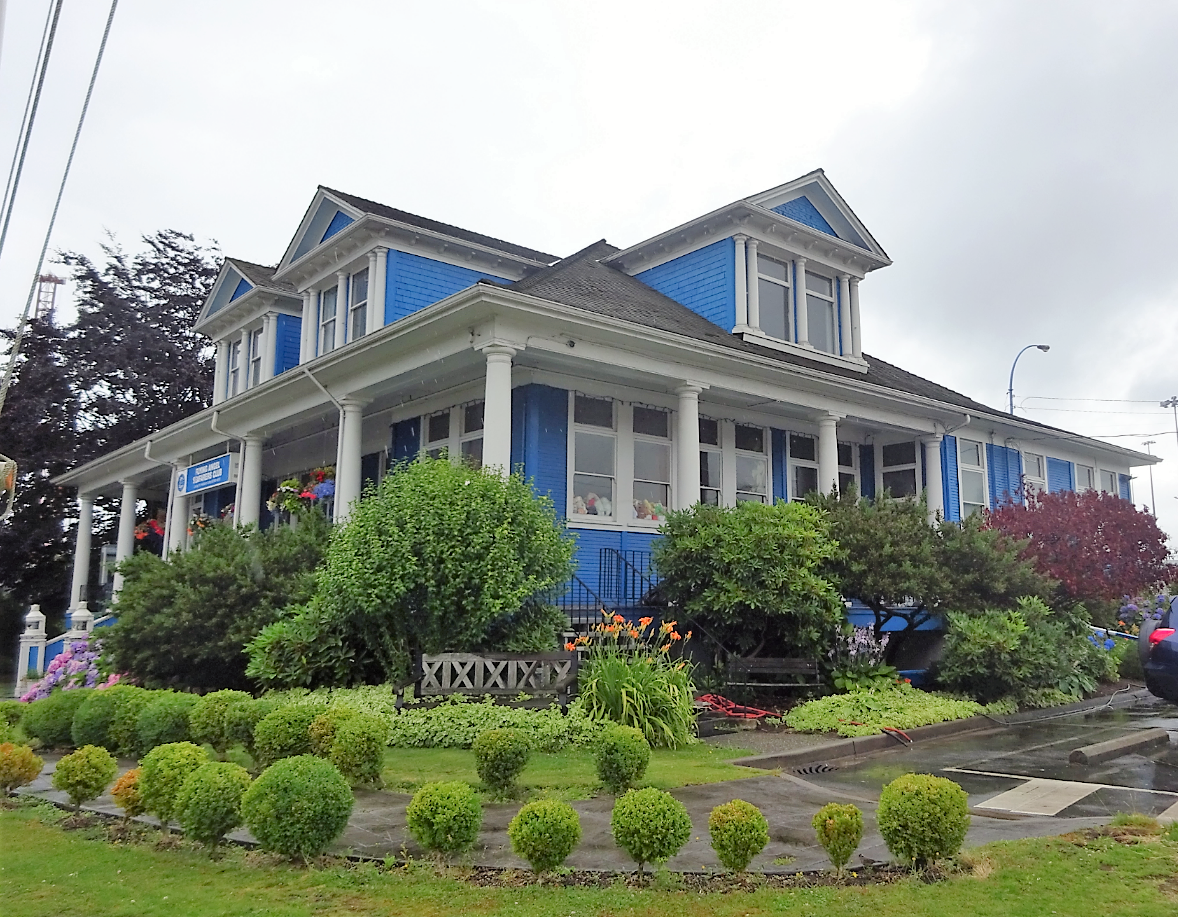The Flying Angels Club House was built in 1906 by the BC Mills as their offices for sales of pre-fabricated houses, schools and churches.
Story in Vancouver Exposed: Searching for the City’s Hidden History
Kathryn Murray’s association with the Mission to Seafarers goes back to 1902—the same year the Flying Angels Club came to Vancouver. Kathyrn’s great grandmother Florence Sentell was bringing a fruit basket to the Mission when she met Charles Westrand, Kathryn’s great grandfather.

The Mission which still provides assistance and care to seaman from over 90 countries, has been housed in a heritage building at the foot of Dunlevy for almost half-a-century. The Mission owns the house while the Port of Vancouver owns the land and leases it back for $1 a year.
Port Security:
Sixteen years ago the Mission was easily accessible and surrounded by gardens that led to the waterfront. Post 9/11 madness, the Port is wrapped in a chain link of security which has marooned the house in a kind of cul-de-sac. It shows in the numbers. Before the security fences shot up, about 24,000 seafarers visited the Mission every year. Last year only 3,500 visited.
Kathryn thinks part of the problem is that people have forgotten about them. The other problem is the Internet. They are literally at the end of the line and get whatever the Port doesn’t use.
“The guys come and just can’t get proper Internet and that’s really something that’s required when they only have an hour or two and they really need to talk to people back home.”

It would cost $20,000 to get a better connection.
And the Internet is huge for men who may be in town for just a few hours. Kathryn, who manages this location and another at Roberts Bank—has watched a seafarer attend his mother’s funeral through Skype, another watched his son take his first steps, and she saw one man pick up a teddy from the gift store to teach his child the A, B, C’s. She says, the men who visit—and it’s almost all men, call her “Mother.”

House is threatened
The Mission is about to lose even more of its garden as the Port’s activities expand (think First Order). In the long term, the fate of the house is threatened, and this is tragic because the building and its location are an essential part of Vancouver’s history.
First Nations call the site Kumkumalay meaning “big maple trees.” It was the site of the Hastings Saw Mill and the old mill store and the first public school. The homeless set up camp here during the worst of the Depression. Hastings Mill was a significant employer of Japanese Canadians which led to Japantown.

The Mission’s house was built by BC Mills Timber and Trading Co. in 1906 as the offices for sales of pre-fabricated houses, schools and churches. The building was a showplace with each office paneled in a different type of wood—fir, hemlock, red cedar and balsam—and painted over when the Vancouver Harbour Commissioners moved in. The National Harbours Board were next to own the house, and the Mission took possession in the early 1970s.
Next time you’re in the area, visit the house while you still can. Maybe bring some books and games or clothes that you no longer need. Kathryn and her visiting Seafarer’s will be most grateful.

For the story about the sculpture that is now at the front of the house: see Art, History and a Mission
© All rights reserved. Unless otherwise indicated, all blog content copyright Eve Lazarus.


